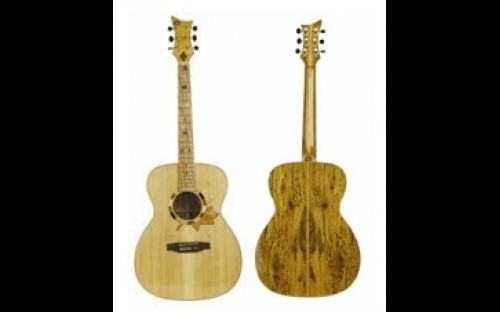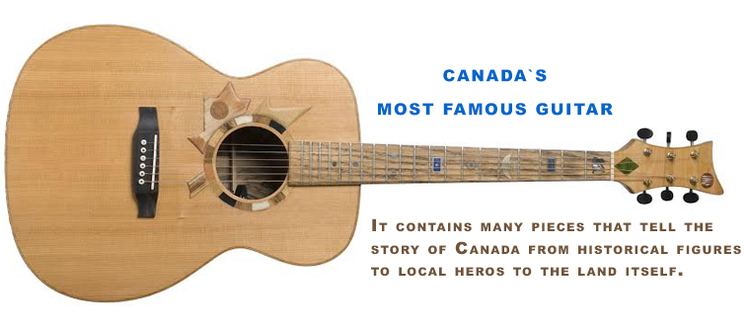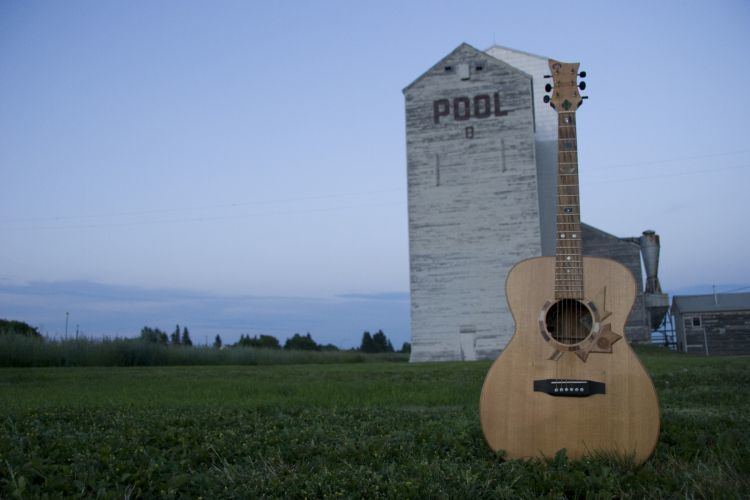 | ||
Six string nation introduction
Six String Nation is a guitar created by award-winning writer and broadcaster Jowi Taylor. Built from 64 pieces of bone, metal, wood, stone and fabric, the guitar was made as a symbol of national unity, to explore Canadian identity, and to connect people from all regions in Canada. The idea to build the guitar was conceived by Taylor the night before the 1995 Quebec referendum on sovereignty, when it became apparent to him that the notion of Canadian identity was centred only around English and French, ignoring anybody else. The guitar - nicknamed Voyageur - made its official debut on July 1, 2006, at the Canada Day celebrations on Parliament Hill in Ottawa. Over a period of eleven years, Taylor collected pieces for the guitar from every province and territory in Canada. It was built by luthier George Rizsanyi in his workshop near Pinehurst, Nova Scotia.
Contents
- Six string nation introduction
- Jowi taylor explains six string nation guitar toronto sun
- Materials
- List of Materials
- References

The Six String Nation guitar made its debut on Canada Day 2006, where it was played by Stephen Fearing, Colin Linden, Tom Wilson, and Stars. It has since been played by musicians such as Feist and Bruce Cockburn. It received the nickname Voyageur from Lt. Col. Susan Beharrial at a ceremony launching the 2008 Festival du Voyageur in Winnipeg-St. Boniface. Following its debut performance, Taylor and the Six String Nation guitar made a 15-stop tour that summer stopping in communities where some of the pieces had originated which, along with subsequent visits to communities and encounters with people across Canada, were chronicled with photos in a book by Taylor in 2009 (Douglas & Mcintyre publishers). In honour of the guitar, a fifty-cent coin was created by the Royal Canadian Mint in 2009. It is in the triangular shape of a guitar pick and has a hologram on reverse.

Jowi taylor explains six string nation guitar toronto sun
Materials

The guitar is made from 64 pieces of bone, metal, wood, stone and fabric, representing every province and territory. The guitar's neck has wood from the deck of the Bluenose II, a bagel shibba from Montreal, and oak from a ceiling joist from the St. Boniface Museum in Winnipeg, a former convent of the Grey Nuns and the building where Louis Riel attended school. The wood used from the ceiling joist was estimated to be 400 to 500 years old when it was procured for the construction of the St. Boniface Museum the 1840s.

The pick guard is in the form of a Maple Leaf, stained with red ochre from Newfoundland, and contains parts of the homes of basketball inventor John Naismith and of black cowboy John Ware. The leaf stem is made from pieces of Paul Henderson's hockey stick, Wayne Gretzky’s Titan hockey stick and a seat from the Montreal Forum.
On the inside there is wood from Canada’s first Chinatown, Fan Tan Alley in Victoria, Nancy Greene’s childhood skis, and a piece of Pierre Trudeau’s canoe paddle.
Additional pieces include material from Don Cherry’s Pants; gold from one of Maurice “Rocket” Richard’s Stanley Cup rings; a piece of the oldest rock in the world, Acasta Gneiss, from North West Territories; walrus tusk from Rankin Inlet; mastodon ivory from the Yukon; a piece of an oak door frame from Centre Block on Parliament Hill; wood from a lighthouse in Cape Race in Newfoundland; and wood from a sideboard that belonged to Sir John A. Macdonald.
Most of the front of the guitar is made from wood from a 300-year-old golden spruce from Haida Gwaii (formerly the Queen Charlotte Islands) in British Columbia. The golden spruce - also called Kiidk’yaas' - had a rare genetic mutation that caused its needles to appear golden in colour. Sacred to the Haida First Nation, the tree was cut down in 1997 by an unemployed forest engineer named Grant Hadwin as a protest against the logging industry. The piece of the golden spruce took Taylor two years of negotiation to procure and it is the only wood harvested from the tree.
List of Materials
Piece of rafter from Pier21 (now Canadian Museum of Immigration, Halifax, N.S.)
